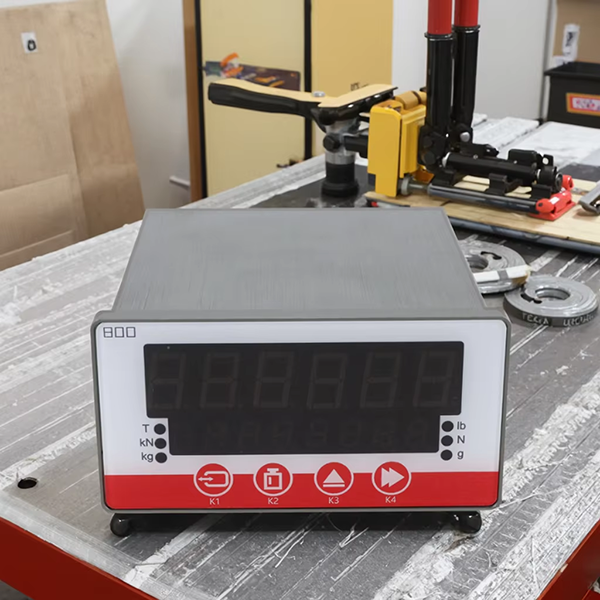When it comes to weighing systems, you might hear people tossing around terms like “load cell” and “indicator,” but have you ever thought about what a load cell indicator actually is? As someone who’s been in the weighing industry for a while, allow me to break it down for you in simple terms.
So, What Is a Load Cell Indicator?
A load cell indicator is a device that works in conjunction with a load cell to provide a readable output of weight measurements. Think of it as the “brain” of the operation. While the load cell detects and measures the force applied to it (like the weight of a product), the indicator interprets that information and displays it in a way that makes sense to us humans—usually in units like pounds, kilograms, or tons.
How Does It Work?
At its core, a load cell is a sensor that converts mechanical force into an electrical signal. This signal is what the load cell indicator processes. Once the load cell registers weight, it sends an electrical signal to the indicator, which then processes and converts this signal into a digital or analog reading.
For example, if you place a bag of flour on a scale equipped with a load cell, the load cell will detect the weight. The indicator takes this data and shows you something like “5 kg” on its display. It’s a straightforward process, but the technology behind it is pretty fascinating!
Why Are Load Cell Indicators Important?
In many industries, accurate weight measurement is crucial. Whether you’re weighing products for shipping, monitoring inventory levels, or conducting quality control tests, having a reliable load cell indicator is key to running an efficient operation.
Accuracy: Load cell indicators are designed to provide precise measurements, which can help avoid costly mistakes. Imagine sending out a shipment that’s overweight—that could lead to extra fees or, worse, damage to your reputation.
User-Friendly: Load cell indicators typically come with intuitive displays and controls, making it easy for operators to use them without extensive training. This simplicity leads to fewer errors and faster operations.
Data Management: Many modern load cell indicators come with advanced features like data logging and integration with computer systems. This means you can easily track weights over time, which is helpful for inventory management and compliance with industry regulations.
What to Look For in a Load Cell Indicator
If you’re considering investing in a load cell indicator, here are a few key features to look for:
Display Type: Some indicators have LED displays for better visibility in bright environments, while others might use LCD. Choose one that suits your working conditions.
Connection Options: Depending on your setup, you might want an indicator that supports multiple connectivity options like RS232, USB, or even wireless.
Calibration Ease: Make sure the indicator is easy to calibrate. Regular calibration is essential for maintained accuracy, so a straightforward calibration process saves valuable time.
Durability: If you’re using the indicator in a harsh environment (think dusty warehouses or wet labs), look for one with a rugged design or an IP rating indicating resistance to dust and water.

Wrapping Up
In the weighing world, load cell indicators play a critical role. They ensure that you get accurate and reliable weight readings, helping you avoid mistakes and maintain smooth operations. Whether you’re in manufacturing, shipping, or any other industry where weight counts, a good load cell indicator is definitely worth its weight—in gold!
So next time you think about weighing something, remember the little yet powerful role of the load cell indicator. It truly is at the heart of getting that weight right!

